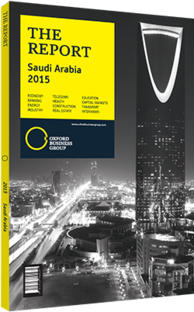Saudi Arabia's Makkah has plans to expand its water, wastewater and sewerage networks
In common with other cities in the Kingdom, Makkah’s growing population and location have placed a strain on the management of its water resources. The city’s rapid urban development, not to mention the regeneration of existing urban areas, is also necessitating a substantial programme of investment to expand and upgrade wastewater and sewerage networks. To achieve the goal of long-term water security, local authorities are increasingly looking to the private sector to provide high-tech and sustainable solutions.
With nearly 2m inhabitants, rising to over 6m during the Hajj season, Makkah has long outstripped its capacity to rely upon nearby aquifers and instead draws on water provided through desalination facilities located in Shuaybah, 100 km away on the Red Sea coast. The first two such plants – Shuaybah I and II – were built in 1989 and 2002 and utilise multi-stage flash (MSF) technology, which produces potable water by repeatedly boiling and condensing seawater and is often associated with an electric power plant. The two MSF plants at Shuaybah produce 583,000 cu metres of water per day and just under 500 MW of power.
TACKLING THE CHALLENGES: In 2013 a new desalination plant was added to the Shuaybah facilities, which makes use of reverse osmosis (RO) technology – a less energy intensive and less polluting process than MSF. Shuaybah’s new RO plant has a daily capacity of 240,000 cu metres, and as a result of its installation an older MSF plant with a capacity of 40,000 cu metres could be decommissioned. The new plant brought the total output of the Saline Water Conversion Corporation (SWCC), the government-owned desalinated water producer, to 1.3m cu metres daily.
Expanding and maintaining a sewage and water treatment network able to cope in an efficient and sustainable manner is also a challenge. In February 2014 the National Water Company (NWC) announced it would be investing SR5.5bn ($1.46bn) over the coming 15 months in 60 large projects across Makkah. The projects are to include construction of main and secondary water and sanitation networks, the repair and rehabilitation of main lines and secondary networks, and the supply of water and sanitation services to homes. The NWC was established in 2008 by the government as part of its plans to introduce private sector participation to the water sector, in line with the Strategic Transformation Plan developed by the Ministry of Water and Electricity in 2005. The NWC has taken on responsibility for the provision of water and wastewater treatment in the Kingdom’s largest cities.
MAKING DEALS: The NWC engages in public-private partnerships and has recently signed operation and management (O&M) contracts. In 2013 ACCIONA Agua, a Spanish-based infrastructure, energy and water corporation, in collaboration with local company Miahona, signed a two-year O&M contract (with the possibility of renewal) for Makkah’s Haddah-1 and Arana-1 wastewater treatment plants, which are responsible for treating 375,000 cu metres of water per day. Following this, in December 2014 NWC signed a contract with Dutch infrastructure and water company Arcadis to provide consultancy on the development of a water, wastewater and treated sewage effluent asset management master plan for the Makkah region.
The master plan, which will cover the 2015-20 period, is intended to map out the capital investment required to meet the growing demand from residents and pilgrims alike. The SWCC and NWC jointly supply 680,000 cu metres of desalinated water per day to Makkah during the Hajj for use by the city’s pilgrims.
According to Philip Bourne, water sector director for Middle East operations at Arcadis, the sheer number of pilgrims places a significant strain on basic services. “The water service coverage in Makkah is low, around 65% of the populated area, and the wastewater service coverage is less,” Bourne told local press. “There is currently not sufficient capacity in the treatment plants to treat the additional flow and load.” Meeting this challenge is thus likely to present further opportunities for collaboration with the private sector in years to come.
You have reached the limit of premium articles you can view for free.
Choose from the options below to purchase print or digital editions of our Reports. You can also purchase a website subscription giving you unlimited access to all of our Reports online for 12 months.
If you have already purchased this Report or have a website subscription, please login to continue.

